-
 Bitcoin
Bitcoin $101,885.2651
-0.96% -
 Ethereum
Ethereum $2,241.4771
-2.19% -
 Tether USDt
Tether USDt $1.0003
-0.01% -
 XRP
XRP $2.0230
-3.06% -
 BNB
BNB $622.7870
-1.84% -
 Solana
Solana $134.1802
-1.39% -
 USDC
USDC $0.9999
-0.02% -
 TRON
TRON $0.2673
-2.01% -
 Dogecoin
Dogecoin $0.1539
-2.02% -
 Cardano
Cardano $0.5489
-1.39% -
 Hyperliquid
Hyperliquid $35.4321
3.12% -
 Bitcoin Cash
Bitcoin Cash $455.5100
-1.48% -
 Sui
Sui $2.5070
-3.31% -
 UNUS SED LEO
UNUS SED LEO $9.0530
0.93% -
 Chainlink
Chainlink $11.8065
-2.10% -
 Stellar
Stellar $0.2311
-2.96% -
 Avalanche
Avalanche $16.8439
-0.69% -
 Toncoin
Toncoin $2.7521
-4.05% -
 Shiba Inu
Shiba Inu $0.0...01078
-1.60% -
 Litecoin
Litecoin $80.6245
-1.52% -
 Hedera
Hedera $0.1367
-0.74% -
 Monero
Monero $303.5650
-2.41% -
 Ethena USDe
Ethena USDe $1.0006
-0.01% -
 Dai
Dai $1.0000
-0.01% -
 Polkadot
Polkadot $3.2265
-2.56% -
 Bitget Token
Bitget Token $4.0677
-3.51% -
 Uniswap
Uniswap $6.2998
-2.54% -
 Pi
Pi $0.5072
-0.68% -
 Pepe
Pepe $0.0...08930
-4.32% -
 Aave
Aave $231.6316
-1.51%
Is EMV effective in a bear market? How to use it in a long-term downward trend?
EMV helps traders spot short-term buying opportunities in bear markets by signaling when a shorter-term EMV crosses above a longer-term one.
May 25, 2025 at 10:05 am
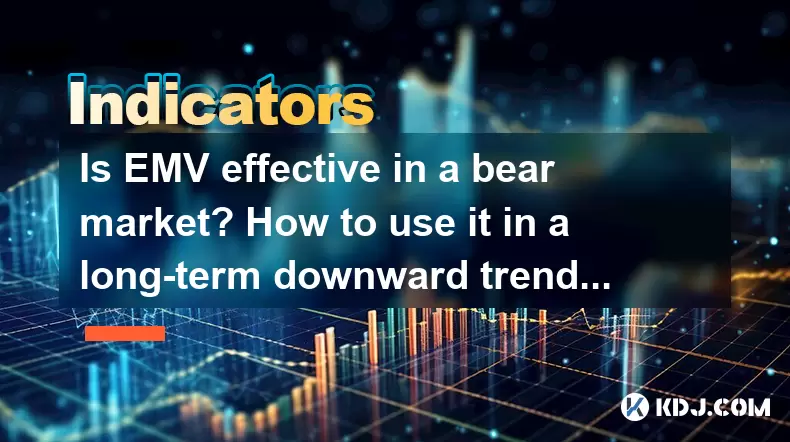
The concept of Exponential Moving Average (EMV) is a popular technical analysis tool used by traders and investors to identify trends and potential reversal points in various financial markets, including cryptocurrencies. In this article, we will explore the effectiveness of EMV during a bear market and provide a detailed guide on how to use it effectively in a long-term downward trend.
Understanding EMV and Its Relevance in Cryptocurrency Trading
Exponential Moving Average (EMV) is a type of moving average that places a greater weight and significance on the most recent data points. Unlike the Simple Moving Average (SMA), which assigns equal weight to all values, EMV reacts more quickly to price changes, making it a preferred tool for many traders in the fast-moving cryptocurrency markets.
In the context of cryptocurrency trading, EMV can be used to smooth out price action and help traders identify the direction of the trend. During a bear market, where prices are generally declining, the effectiveness of EMV can be assessed by its ability to provide timely signals for potential buying or selling opportunities.
Effectiveness of EMV in a Bear Market
During a bear market, the overall sentiment is negative, and prices tend to decline over a prolonged period. EMV's effectiveness in such a market can be gauged by its ability to provide clear signals for short-term trading opportunities within the broader downward trend. While EMV cannot predict the end of a bear market, it can help traders capitalize on temporary rebounds or identify points where the downward momentum might be slowing.
For instance, during a bear market, a crossover of a shorter-term EMV (e.g., 20-day) above a longer-term EMV (e.g., 50-day) might indicate a short-term bullish signal within the larger bearish trend. Conversely, a crossover of the shorter-term EMV below the longer-term EMV could signal a continuation of the bearish trend.
Using EMV to Identify Entry and Exit Points in a Bear Market
To effectively use EMV in a bear market, traders need to focus on identifying entry and exit points that align with their risk tolerance and trading strategy. Here’s how to do it:
Identify the Trend: Start by plotting multiple EMVs on your chart, such as the 20-day, 50-day, and 200-day EMVs. In a bear market, the longer-term EMVs (50-day and 200-day) will generally be sloping downward, confirming the bearish trend.
Look for Short-Term Rebounds: Within the downward trend, look for instances where the shorter-term EMV (20-day) crosses above the longer-term EMV (50-day). This could indicate a potential short-term rebound, offering a buying opportunity for traders looking to capitalize on temporary price increases.
Set Exit Points: Once you enter a trade based on a short-term bullish signal, set your exit points using the EMVs. For instance, if the 20-day EMV crosses back below the 50-day EMV, it might be a signal to exit the trade and secure profits or cut losses.
Monitor the Overall Trend: Always keep an eye on the longer-term EMVs (50-day and 200-day). If these continue to slope downward, it confirms that the bear market is still in place, and any short-term rebounds should be treated as temporary.
Combining EMV with Other Indicators for Enhanced Analysis
While EMV can be a powerful tool on its own, combining it with other technical indicators can provide a more comprehensive analysis and increase the probability of successful trades. Here are some indicators that can be used in conjunction with EMV:
Relative Strength Index (RSI): The RSI can help identify overbought or oversold conditions. During a bear market, an RSI reading below 30 might indicate an oversold condition, suggesting a potential short-term rebound.
Moving Average Convergence Divergence (MACD): The MACD can confirm EMV signals. A bullish crossover in the MACD line above the signal line can confirm a potential short-term bullish signal from the EMV.
Volume Indicators: High trading volume accompanying a short-term bullish signal from the EMV can increase the confidence in the signal, as it suggests strong market interest.
Practical Example of Using EMV in a Bear Market
Let’s walk through a practical example of how to use EMV in a bear market. Assume you are monitoring Bitcoin (BTC) during a prolonged bearish period:
Plot the EMVs: On your trading chart, plot the 20-day, 50-day, and 200-day EMVs. You notice that the 200-day EMV is sloping downward, confirming the bear market.
Identify a Short-Term Bullish Signal: After a period of decline, you observe that the 20-day EMV crosses above the 50-day EMV. This crossover suggests a potential short-term bullish signal within the broader bearish trend.
Enter the Trade: Based on this signal, you decide to enter a long position on BTC, expecting a temporary rebound.
Set Exit Points: You set your exit point at the point where the 20-day EMV crosses back below the 50-day EMV. Additionally, you monitor the RSI and notice that it has reached an oversold level (below 30), further supporting your decision to enter the trade.
Monitor and Exit: As the price of BTC starts to rise, you keep a close eye on the EMVs. When the 20-day EMV eventually crosses below the 50-day EMV, you exit the trade, securing your profits.
Adjusting EMV Settings for Different Timeframes
Different trading timeframes may require different EMV settings to effectively capture trends and signals. Here’s how to adjust EMV settings based on your trading timeframe:
Short-Term Trading (Intraday): For intraday trading, you might use shorter EMV periods such as the 5-day, 10-day, and 20-day EMVs. These shorter periods will be more sensitive to price changes and can help you identify quick trading opportunities.
Medium-Term Trading (Days to Weeks): For medium-term trading, the 20-day, 50-day, and 100-day EMVs might be more suitable. These periods can help you capture trends that last several days to weeks.
Long-Term Trading (Weeks to Months): For long-term trading, you might use the 50-day, 100-day, and 200-day EMVs. These longer periods can help you identify and follow trends that last several weeks to months.
Frequently Asked Questions
Q: Can EMV be used to predict the end of a bear market?
A: EMV is not designed to predict the end of a bear market. It is a trend-following indicator that helps traders identify short-term opportunities within a larger trend. To predict the end of a bear market, traders would need to combine EMV with other fundamental and technical analysis tools.
Q: How reliable are EMV signals during high volatility periods?
A: During periods of high volatility, EMV signals can be less reliable due to rapid price fluctuations. Traders should use additional indicators and consider increasing their risk management measures when trading in highly volatile markets.
Q: Should I use EMV exclusively for my trading decisions?
A: No, it is not recommended to rely solely on EMV for trading decisions. Combining EMV with other technical indicators, fundamental analysis, and risk management strategies can provide a more robust trading approach.
Q: Can EMV be used for all cryptocurrencies, or is it more effective for certain ones?
A: EMV can be used for all cryptocurrencies, but its effectiveness can vary depending on the liquidity and trading volume of the specific cryptocurrency. More liquid cryptocurrencies like Bitcoin and Ethereum tend to have more reliable EMV signals due to higher trading volumes and tighter spreads.
Disclaimer:info@kdj.com
The information provided is not trading advice. kdj.com does not assume any responsibility for any investments made based on the information provided in this article. Cryptocurrencies are highly volatile and it is highly recommended that you invest with caution after thorough research!
If you believe that the content used on this website infringes your copyright, please contact us immediately (info@kdj.com) and we will delete it promptly.
- BNB Price Check: Stablecoin Surge vs. Prediction Rollercoaster
- 2025-06-23 14:25:12
- Metaplanet's Bitcoin Bonanza: Holdings Skyrocket Amidst Market Swings
- 2025-06-23 14:25:12
- Altcoins Under Pressure: Cardano and XRP Face Critical Tests
- 2025-06-23 12:25:12
- Rare Coin Fever in Wiltshire: Auctions, Errors, and Olympic Gold!
- 2025-06-23 12:25:12
- XRP Price Under Pressure: War Fears and Market Sentiment
- 2025-06-23 12:30:12
- HAI Token Private Key Leak: What Happened and How to Stay Safe
- 2025-06-23 12:45:12
Related knowledge

How to read the sideways consolidation after the bottom volume and long positive line?
Jun 23,2025 at 02:28pm
Understanding the Sideways ConsolidationWhen analyzing cryptocurrency charts, sidewards consolidation refers to a phase where prices move within a narrow range without a clear upward or downward trend. This pattern often appears after significant price movements, such as a sharp increase followed by a period of equilibrium between buyers and sellers. In...
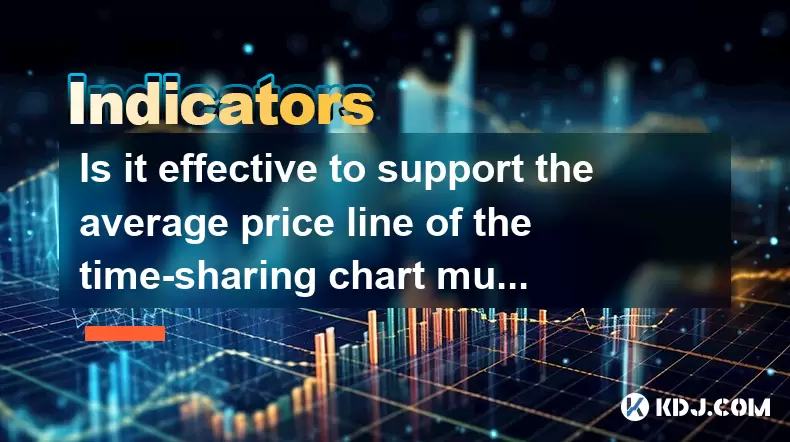
Is it effective to support the average price line of the time-sharing chart multiple times?
Jun 23,2025 at 01:36pm
Understanding the Average Price Line in Time-Sharing ChartsIn cryptocurrency trading, time-sharing charts refer to real-time price charts that display price movements over short intervals, often within a single trading day. Within these charts, the average price line, also known as the Volume Weighted Average Price (VWAP), is a commonly used technical i...
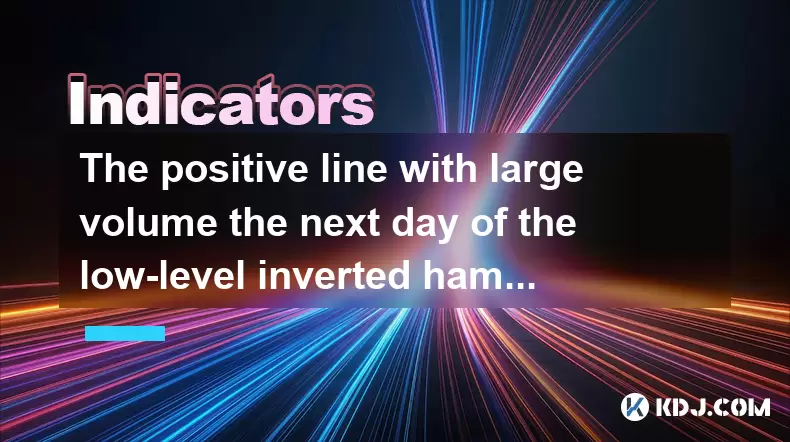
The positive line with large volume the next day of the low-level inverted hammer line confirms the reversal?
Jun 23,2025 at 01:21pm
Understanding the Low-Level Inverted Hammer LineThe inverted hammer line is a single candlestick pattern that typically appears at the end of a downtrend. It has a small real body near the bottom of the trading range and a long upper shadow, indicating that bulls attempted to push prices higher but were met with selling pressure. When this pattern forms...
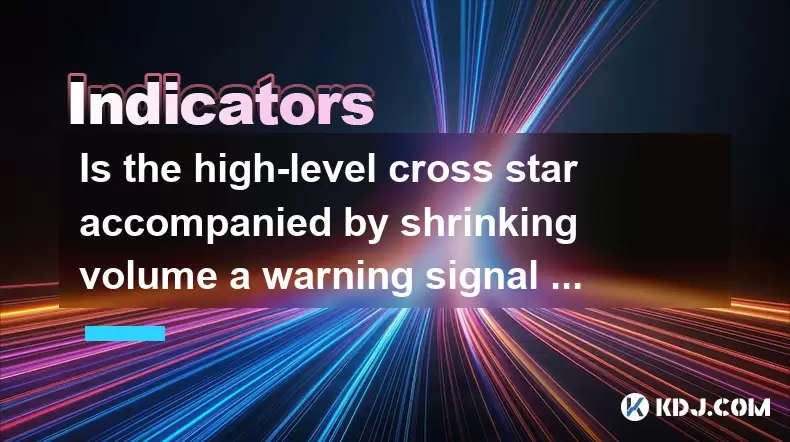
Is the high-level cross star accompanied by shrinking volume a warning signal of peaking?
Jun 23,2025 at 01:28pm
Understanding High-Level Cross Star PatternsIn the world of cryptocurrency trading, candlestick patterns are essential tools for technical analysis. One such pattern is the high-level cross star, which appears as a doji or near-doji candle at a significant resistance level. This pattern often indicates indecision in the market and can be interpreted as ...
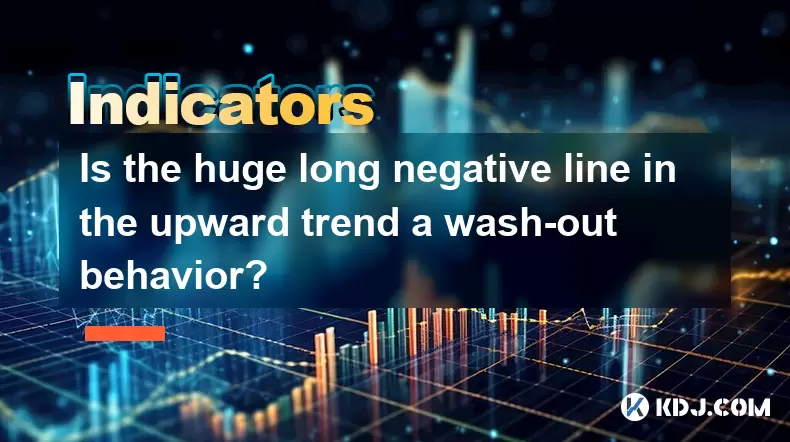
Is the huge long negative line in the upward trend a wash-out behavior?
Jun 23,2025 at 12:49pm
Understanding the Long Negative Candlestick in an Uprising TrendA long negative candlestick, often referred to as a long red or bearish candle, appearing during an upward trend can raise concerns among traders and investors. This pattern typically indicates a sudden and significant drop in price after a period of rising prices. It is often interpreted a...
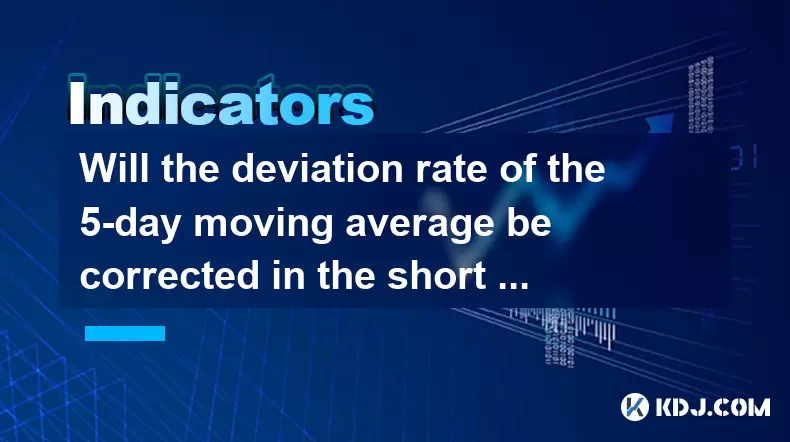
Will the deviation rate of the 5-day moving average be corrected in the short term if it is too large?
Jun 23,2025 at 02:07pm
Understanding the Deviation Rate of the 5-Day Moving AverageIn cryptocurrency trading, technical analysis plays a crucial role in evaluating price movements. One commonly used indicator is the 5-day moving average (MA), which calculates the average closing price over the past five days. The deviation rate refers to how far the current price or another m...

How to read the sideways consolidation after the bottom volume and long positive line?
Jun 23,2025 at 02:28pm
Understanding the Sideways ConsolidationWhen analyzing cryptocurrency charts, sidewards consolidation refers to a phase where prices move within a narrow range without a clear upward or downward trend. This pattern often appears after significant price movements, such as a sharp increase followed by a period of equilibrium between buyers and sellers. In...

Is it effective to support the average price line of the time-sharing chart multiple times?
Jun 23,2025 at 01:36pm
Understanding the Average Price Line in Time-Sharing ChartsIn cryptocurrency trading, time-sharing charts refer to real-time price charts that display price movements over short intervals, often within a single trading day. Within these charts, the average price line, also known as the Volume Weighted Average Price (VWAP), is a commonly used technical i...

The positive line with large volume the next day of the low-level inverted hammer line confirms the reversal?
Jun 23,2025 at 01:21pm
Understanding the Low-Level Inverted Hammer LineThe inverted hammer line is a single candlestick pattern that typically appears at the end of a downtrend. It has a small real body near the bottom of the trading range and a long upper shadow, indicating that bulls attempted to push prices higher but were met with selling pressure. When this pattern forms...

Is the high-level cross star accompanied by shrinking volume a warning signal of peaking?
Jun 23,2025 at 01:28pm
Understanding High-Level Cross Star PatternsIn the world of cryptocurrency trading, candlestick patterns are essential tools for technical analysis. One such pattern is the high-level cross star, which appears as a doji or near-doji candle at a significant resistance level. This pattern often indicates indecision in the market and can be interpreted as ...

Is the huge long negative line in the upward trend a wash-out behavior?
Jun 23,2025 at 12:49pm
Understanding the Long Negative Candlestick in an Uprising TrendA long negative candlestick, often referred to as a long red or bearish candle, appearing during an upward trend can raise concerns among traders and investors. This pattern typically indicates a sudden and significant drop in price after a period of rising prices. It is often interpreted a...

Will the deviation rate of the 5-day moving average be corrected in the short term if it is too large?
Jun 23,2025 at 02:07pm
Understanding the Deviation Rate of the 5-Day Moving AverageIn cryptocurrency trading, technical analysis plays a crucial role in evaluating price movements. One commonly used indicator is the 5-day moving average (MA), which calculates the average closing price over the past five days. The deviation rate refers to how far the current price or another m...
See all articles
























































































